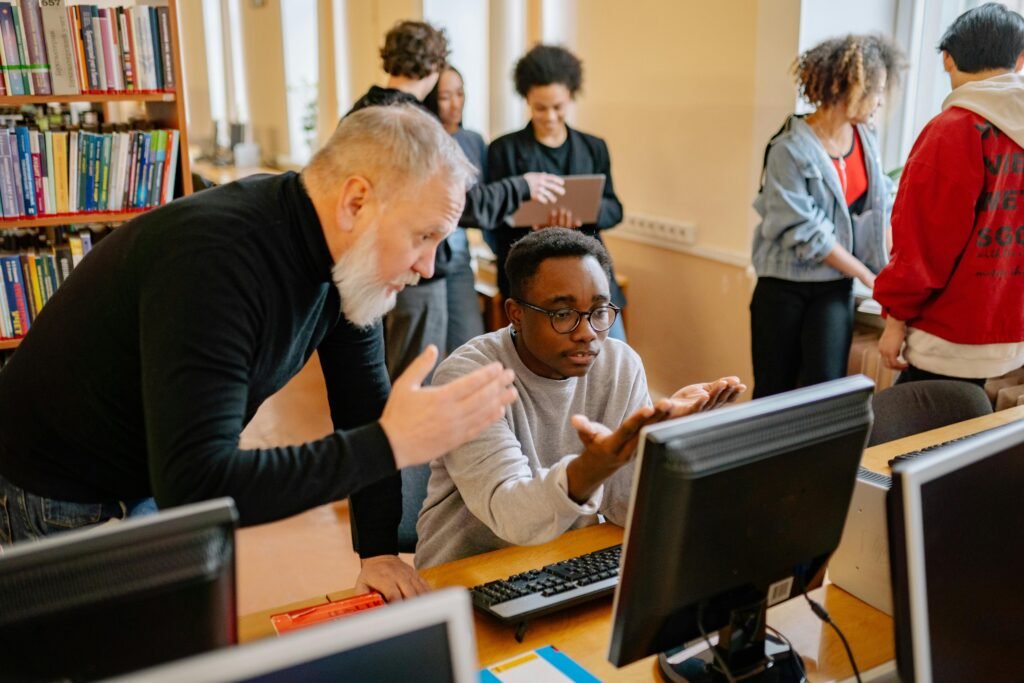
Why School-Parent Partnerships Matter
We’ve all heard the saying: “It takes a village to raise a child.” Nowhere is this more true than in education. Schools cannot do the work of educating our children alone, and parents cannot support learning in isolation. When families and schools partner together, students don’t just gain academically—they grow socially, emotionally, and personally.
Research consistently shows that strong school-parent partnerships improve student outcomes. Children whose families are actively engaged tend to have better grades, higher test scores, stronger attendance, and a greater likelihood of graduating. But beyond the numbers, these partnerships create a culture where students feel supported, valued, and motivated.
Unfortunately, for too long, parent involvement has been narrowly defined. Parents have been invited to volunteer at book fairs, chaperone field trips, or send in snacks—important contributions, yes, but not the full picture. True partnership goes much deeper. It’s about building relationships, opening lines of communication, aligning goals, and creating a community where every child feels like they belong.
In this post, we’ll explore five powerful ways parents can partner with schools—not just as helpers, but as collaborators, advocates, and co-builders of strong educational communities. Each strategy is rooted in respect, shared responsibility, and the belief that when parents and schools work together, students flourish.

1. Show Up and Get Involved
One of the most powerful ways parents can build trust with schools is through consistent presence. “Showing up” doesn’t mean attending every single event or volunteering daily—it means being intentional about engaging in school life in ways that are meaningful and sustainable.
Attend School Events and Meetings
Parent-teacher conferences, back-to-school nights, open houses, and assemblies aren’t just calendar fillers—they are opportunities for connection. By showing up, parents learn firsthand what their children are experiencing academically and socially. Attending gives insight into the curriculum, teaching styles, and expectations.
For parents, these events are a chance to ask questions, offer insights, and connect with other families. For children, seeing their parents in the school setting reinforces that school is important and that their efforts matter. It also builds their confidence—when they look out into the audience and see their parent cheering them on, it matters.

Building Community Through Presence
Presence at school events also strengthens the parent community. Networking with other families fosters collaboration and shared responsibility. For example, a parent you meet at an open house might later join forces with you on a fundraiser or family night. These connections ripple outwards, creating a more supportive, inclusive school culture.
What If You Can’t Be There in Person?
For many families, work schedules, childcare responsibilities, or transportation barriers make it hard to physically attend events. That doesn’t mean you can’t be involved. Schools are increasingly offering hybrid meetings, recordings of events, and virtual conference options. Parents can request these or suggest alternatives. Even a quick follow-up email to a teacher after a missed event communicates engagement.
Bottom line: Involvement doesn’t look the same for every parent, but presence—whether in person, virtually, or through consistent communication—sends a powerful message: I am invested in my child’s education.

2. Keep Communication Open
If presence is the first building block of partnership, communication is the glue that holds everything together. Open, respectful, two-way communication ensures that families and schools stay aligned in supporting students.
Why Communication Matters
Children’s lives don’t exist in two separate worlds of “home” and “school”—they overlap. When parents share insights about what’s happening at home and teachers share observations from the classroom, the full picture emerges. That’s when real support can happen.
Imagine a child who seems withdrawn in class. A teacher might assume it’s shyness, but the parent knows the child is coping with a recent move. Or picture a student struggling with math homework; the parent sees frustration at home, while the teacher sees a lack of participation in class. Without communication, these are puzzle pieces scattered on the floor. Together, they form the whole picture.

Practical Ways to Communicate
- Email: A flexible, accessible tool for quick updates, questions, and sharing progress.
- Phone Calls: Sometimes a conversation is more effective than back-and-forth emails. Calls also allow for tone and empathy to come through.
- Communication Platforms: Many schools now use apps like ClassDojo, Remind, or parent portals. These tools offer real-time updates on grades, assignments, and announcements.
- Regular Check-Ins: Instead of waiting for issues to arise, parents and teachers can schedule brief check-ins to touch base on student progress.
Building Trust Through Dialogue
Communication should never feel like a one-way street. Parents should feel welcome to share observations, concerns, and ideas. Likewise, teachers benefit from parents who listen with empathy and respect the challenges educators face. When communication is framed around collaboration rather than criticism, trust grows—and with trust comes a stronger partnership.

3. Collaborate on Goals and Support
Every child is unique, with strengths to build on and challenges to overcome. Schools can’t tailor every strategy without family input, and families can’t support learning without understanding classroom expectations. That’s why collaboration on educational goals is so important.
When schools begin to view parents as collaborators instead of just helpers, everyone benefits. I dive deeper into this idea in From Helpers to Partners: Redefining Parent Involvement in Schools
Setting Shared Goals
The process starts with conversations. Teachers can share data, observations, and goals for the school year. Parents can add context about the child’s learning style, interests, or challenges. Together, they can co-create goals that are realistic and motivating.
For example:
- A child who struggles with reading might have a school goal of improving fluency. At home, the parent supports by setting aside daily reading time and providing books of interest.
- A student excelling in math might need enrichment activities. The teacher provides advanced resources, while the parent supports by encouraging real-world problem-solving at home.
Consistency Between Home and School
Collaboration ensures consistency. If a teacher uses certain strategies in class—like breaking tasks into smaller steps—parents can mirror those strategies at home. This creates a unified learning environment where students don’t feel pulled in two directions.
Encouraging Accountability
When students see their parents and teachers working together, it creates a sense of accountability. They understand that the adults in their lives are united in supporting their success. This teamwork motivates children to take their own goals seriously.

4. Volunteer Where You Can
Volunteering is one of the most visible ways parents can strengthen partnerships with schools. It’s also one of the most flexible—there’s truly a role for everyone.
Classroom Support
Parents can help prepare materials, assist with small group instruction, or organize classroom projects. Even short, occasional help frees teachers to focus more on instruction and individual student needs.
Event Leadership
From fundraisers and family nights to cultural celebrations, parent volunteers are often the driving force behind school events. These opportunities don’t just raise money—they build school spirit and community pride.
Extracurricular Support
Sports teams, drama clubs, and music ensembles often rely heavily on parent involvement. Coaching, supervising, or even driving carpools ensures these programs can thrive.

Volunteering Beyond the School Day
Parents who can’t be at school during the day can still contribute. Tasks like preparing materials at home, managing online communications, or organizing donations are equally valuable.
The Ripple Effect of Volunteering
When parents volunteer, it sends a message to children: education is worth my time. It also builds stronger connections between families, staff, and the wider community. Over time, these connections strengthen the entire fabric of the school.
5. Celebrate Achievements Together
Celebrating success—big or small—is one of the simplest yet most powerful ways to reinforce the school-parent partnership. Recognition not only boosts a child’s confidence but also strengthens the bond between home and school.
Why Celebration Matters
Children thrive on encouragement. When their efforts are noticed, they feel valued and motivated to keep striving. Celebrations also show that parents and teachers are paying attention—not just to grades, but to effort, progress, and character.
Ways to Celebrate
- At Home: A family dinner, a special outing, or even a handwritten note can mark milestones.
- In School: Achievement assemblies, recognition boards, or shoutouts during morning announcements highlight student effort.
- Online: Sharing positive updates on social media (with sensitivity to privacy) builds a culture of recognition across the school community.
Celebrate Growth, Not Just Results

It’s important to celebrate progress, not only end results. For some students, completing a project on time or improving attendance is just as significant as winning an award. By focusing on growth, we show children that effort matters.
The Community Effect
When schools and families celebrate together, it creates a culture of joy and encouragement. Other students are inspired, parents feel connected, and teachers feel supported in their efforts to uplift students.
Conclusion: Partnering for Student Success
Strong school-parent partnerships don’t happen overnight. They are built through small, consistent actions—showing up, communicating, setting goals, volunteering, and celebrating. Each step reinforces the idea that education is a shared responsibility, one that thrives on collaboration.
When parents and schools work as partners, students don’t just learn—they flourish. They see that the adults in their lives are united in supporting their growth, and that knowledge gives them the confidence to dream bigger, work harder, and reach higher.
So whether you’re attending a parent-teacher conference, sending a quick email, volunteering at a school event, or simply cheering your child on, remember this: you are not just involved—you are a partner. And your partnership makes all the difference

From Helpers to Partners: Redefining Parent Involvement in Schools
Discover why parents are more than volunteers and how shifting this mindset transforms school communities.



